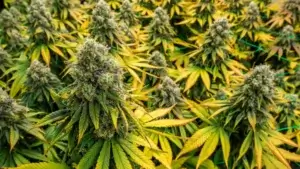Colombia is a leading producer of medical cannabis. There are over 160 licensed companies in the country. As of 2025, Colombia’s relationship with cannabis is a mix of progressive policies and strict regulations.
The plant still has ties to its troubled past. However, the country now balances medical innovation, industrial growth, and careful decriminalization.
Is Cannabis Legal in Colombia? Legal Status in 2025
Yes, cannabis is partially legal in Colombia. Recreational use is decriminalized in some cases, but selling and distributing it is still illegal. Medical cannabis is legal and regulated, and industrial hemp is permitted for cultivation.
1. Recreational Use
Colombians can legally own 20 grams of cannabis and grow 20 plants at home for personal use. But, public consumption is banned, and police can confiscate cannabis found in public spaces.
While smoking at home is allowed, selling even small amounts can lead to trafficking charges.
2. Medicinal Use
Colombia’s medical cannabis program began in 2015. It lets patients get oils, creams, and other non-smokable products if they have a doctor’s prescription.
More than 90% of medical cannabis prescriptions receive insurance coverage. This helps many people afford their treatment.
As of 2025, around 3,000 patients are enrolled in the program, though access remains limited in rural areas.
3. Industrial Use
Industrial hemp (with less than 1% THC) is legal for producing fibers, food, biofuels, and cosmetics. Colombia has a great climate and low production costs, just $0.04 per gram.
This has helped it become a global leader. Exports are expected to hit $800 million by 2025.
Cannabis Usage and Its Impact in Colombia
1. Recreational Drug Use
Recreational cannabis is widely used, especially among younger generations. However, stigma persists among older Colombians who lived through the violent drug wars of the 1980s–90s.
Illegal sales continue even after decriminalization. As a result, 15% of Colombia’s prison population is incarcerated for drug-related crimes.
2. Mental Health Concerns
Studies on cannabis and mental health in Colombia are few. So, public health campaigns stress moderation.
The government bans advertising cannabis products to prevent misuse, especially among youths.
3. Industrial Cannabis Use
Hemp farms and labs now use thousands, boosting rural economies. Khiron and Clever Leaves export oils and pharmaceuticals to Canada, Germany, and other countries. They made $109 million in 2020 and plan to reach $800 million by 2025.
Cannabis Cultivation in Colombia
- Personal Cultivation: Up to 20 plants are allowed at home.
- Medical/Industrial Cultivation: Requires licenses from the Ministry of Health and Agriculture. Over 5,000 hectares are dedicated to legal crops.
- Cannabis Social Clubs: Beginning in July 2024, groups can grow up to 100 plants together for personal use.
Cannabis Law Enforcement and Control
1. How Colombia Enforces Cannabis Laws
Police can confiscate cannabis in public spaces and issue fines for public use. Trafficking penalties are harsh. If you have over 20 grams, you could face 1 to 30 years in prison. The exact time depends on the amount.
2. The Illegal Cannabis Market
Illegal farms still provide 40% of Colombia’s cannabis, even with legal reforms. Gangs often control these operations. Authorities destroy thousands of illegal plants each year. But corruption and remote areas make enforcement tough.
Cannabis Penalties in Colombia
| Offense | Penalty |
| Personal Use | No criminal charges, but fines up to $50 USD or community service |
| Trafficking | No criminal charges, but fines up to USD 50 or community service |
| Growing | Over 20 plants: Treated as trafficking, with jail time. Unlicensed commercial farms: Fines and crop destruction. |
Future of Cannabis Legalization in Colombia
President Gustavo Petro supports full legalization to weaken drug cartels and boost the economy. A 2024 Senate bill proposes regulating recreational sales, but it must pass 8 debates to become law.
If approved, Colombia could join Uruguay and Mexico as Latin American cannabis leaders, potentially adding $8 billion annually to its economy.
Colombia’s cannabis laws are evolving, blending medical innovation with cautious decriminalization. While challenges remain, the country’s progressive steps like insurance-covered prescriptions and booming hemp exports show a bright future.





